What experts know about breast cancer and household exposures
There has been plenty of progress in diagnosing and treating breast cancer in recent years. In fact, there’s been a decades-long decline in the breast cancer death rate due to better prevention, earlier screening, and better treatments, according to 2019 data from the American Cancer Society (ACS).
However, breast cancer is still the most common cancer in women after skin cancer. The risk factors that have the biggest impact on breast cancer tend to be hormonal, like starting menstruation early or going through menopause late (after 55), or having a family risk of the disease. Other factors that can reduce the risk include exercise, earlier pregnancy, and longer breastfeeding, according to Breastcancer.org. (Here are some habits that may help reduce your risk of breast cancer.)
Researchers are working tirelessly to look at other possible breast cancer risk factors, including those inside your home. “There are so many types of chemicals that we are exposed to and they can get into our bodies, especially our breasts,“ says Marisa Weiss, MD, director of Breast Radiation Oncology and Breast Health Outreach at Lankenau Medical Center in Ardmore, Penn, and founder and president of Breastcancer.org. “The breast is a sponge.” Many of these chemicals are endocrine disruptors, meaning that they can look and act a lot like the hormone estrogen, which is known to fuel the growth of some breast cancers, she explains.
While it’s not clear if and how endocrine disruptors may contribute to cancer at the levels most people encounter in their daily lives, here are a few that have been studied.
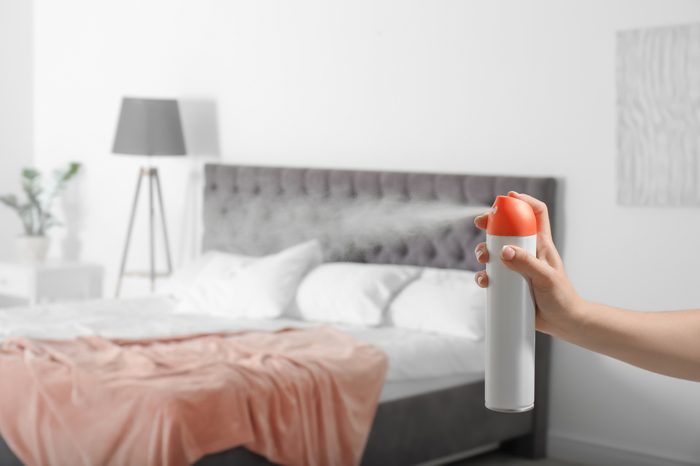
Phthalates in some air fresheners and cleaning products
Phthalates are commonly used in air fresheners and are known to mimic the effects of estrogen in the body. In one study, women who reported using air fresheners had an increased risk for breast cancer. Keep in mind that the study looked at women already diagnosed with breast cancer who were asked to recall past use. This type of study can be tricky, as people with a condition may be more likely to recall using a product then those without it. (It’s known as recall bias.) Air fresheners may also contain terpenes, which can react with background ozone to form formaldehyde, a carcinogen, as well as benzene and styrene, both of which have been linked to breast cancers in animals, the study authors write in Environmental Health. (Although studies in animals aren’t always applicable or true for humans.) “The breast loves hormones so if it looks, smells or tastes like hormones, your breasts can respond and it can be dangerous over time,” Dr. Weiss says. The researchers also asked women about the products they used to control mold or mildew in their homes. Specifically, endocrine-disrupting antimicrobials, phthalates, and alkylphenolic surfactants are often in mold and mildew products, the study authors note. If you are concerned, “use vinegar and water or baking soda and water to clean your home,” Dr. Weiss suggests. These 10 things in your house might be making you sick.
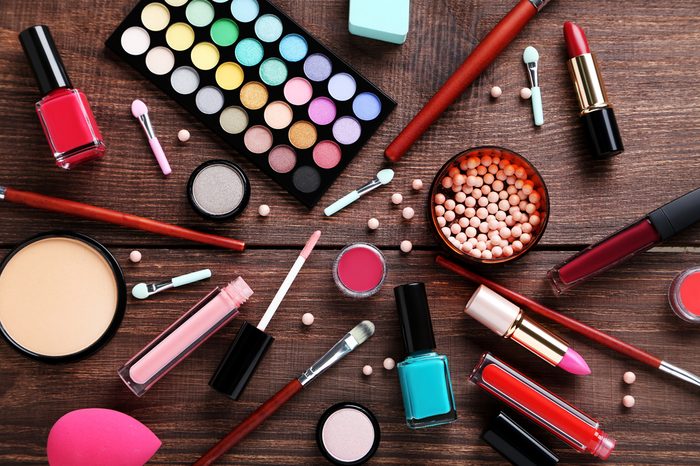
Parabens in some cosmetics
Many of the products that you use on your face and body may contain chemicals known as parabens. Common parabens used as preservatives in your makeup include methylparaben, propylparaben, ethylparaben, and butylparaben. Parabens can penetrate the skin and act like a very weak estrogen, potentially turning on the growth of hormone-receptor-positive breast cancers, according to Breastcancer.org. “We do know that breast is most susceptible to effects of these chemicals during key windows such as pregnancy, breastfeeding, puberty and menopause,” says Mary Beth Terry, PhD, professor of epidemiology at Columbia University in New York City. “It may be that these times matter the most and would therefore be the best times to limit exposure.” (Here’s more information about parabens from the Food and Drug Administration.)

Alcohol in your nightly nightcap
While not a household product in the traditional sense of the word, wine or cocktails may be part of your nightly routine and science has determined the exact amount of alcohol that increases breast cancer risk.
Just one glass of wine or other alcoholic drink a day raises the risk of breast cancer, according to a review from American Institute for Cancer Research and the World Cancer Research Fund. Remember that standard drink sizes are 12-ounces for a beer, 5-ounces for wine or 1.5 to 2 ounces for shot of spirits, the study authors point out. “We do know that alcohol intake can increase breast cancer risk,” Dr. Weiss says.

Phthalates in some nail polishes
Nail polish can contain phthalates, which have been linked to hormone disruption. Many nail polishes also contain formaldehyde, a chemical that also may raise cancer risks, according to the Occupational Safety and Health Administration.
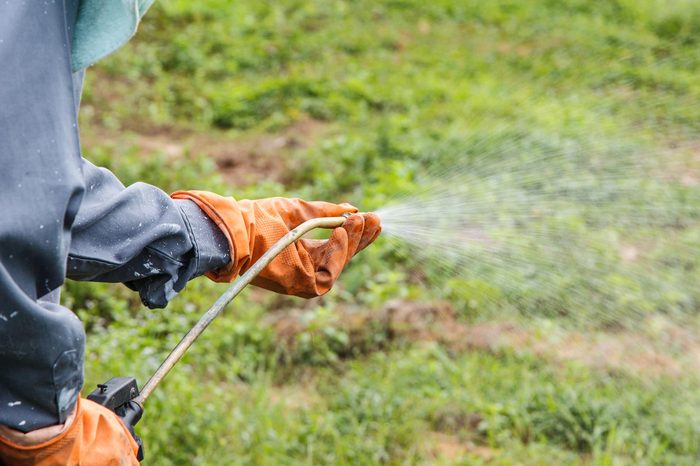
Pesticides in gardening products
Pesticides are regularly used, especially in the United States, to minimize damage to crops and maximize harvest production. In 2011, research in Toxicological Sciences suggested there may be a link between the herbicide atrazine and breast cancer, according to studies in rats. However, studies of exposures in people in the population “provide no support for a causal relationship between atrazine exposure and breast cancer,” they concluded. “The EU banned atrazine in 2005 after it demonstrated harmful effects on wildlife and was found abundantly in human drinking water; however, approximately seventy million pounds of atrazine are applied annually in the United States, primarily to control weeds in corn and sorghum crops,” says Kristi Funk, MD, FACS, Breast Cancer Surgeon and Medical Director at Pink Lotus Breast Center in Los Angeles. “To the extent that it is financially feasible, choose organic foods whenever possible.”
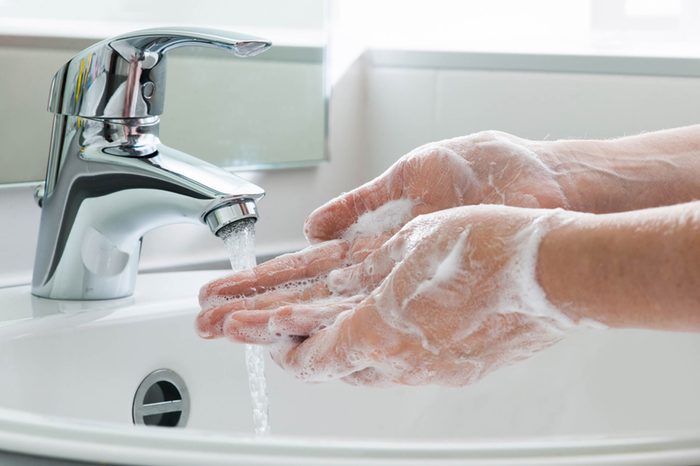
Triclosan in some antibacterial products
The key ingredient that makes a soap antibacterial is a compound called triclosan, which has been looked at in a slew of animal and cell culture studies—breast cancer being one of them, according to research in the International Journal of Environmental Research and Public Health. The Food and Drug Administration has said that the impact on human health is still being studied but that triclosan-containing products don’t have any benefit over regular soap and water when it comes to killing germs. “It’s inexpensive —and most likely safer—to limit your exposure of triclosan,” says Nancy Elliott, MD, a breast cancer surgeon and founder of Montclair Breast Center, in Montclair, New Jersey.
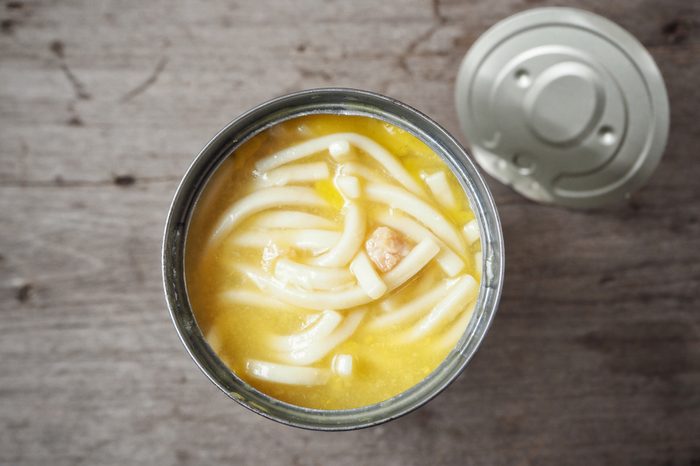
BPA in some canned foods
A recent study in Environmental Research linked found that canned soups and pastas were linked to higher levels of BPA or bisphenol A, a known endocrine disruptor. BPA is used to make polycarbonate plastic. “BPA leaches from can linings into foods and ultimately into us,” warns Dr. Elliot. “BPA increased the occurrence of breast cancer in laboratory animals, even in small doses.” You can look for foods sold in BPA-free cans, or Dr. Elliot recommends purchasing frozen food instead. These are the canned foods nutritionists actually buy.

Particles generated by your fireplace
Polycyclic aromatic hydrocarbons (PAH) can be emitted from fireplaces, space heaters and even cooking fumes, says Terry. “We have found higher exposure in the blood and tissues in women with breast cancer,” she says. Air filters may help clear PAH from indoor air, she says.
While researchers work to answer questions about how or if these household products affect breast cancer risk, there are things to do today to proactively protect your health.
“We do know that exercising regularly, eating a healthy diet, and drinking alcohol only in moderation can reduce risk for developing breast cancer and that regular screening can diagnose breast cancer early when it is in its most treatable stages,” says Dr. Weiss.
